Kerfeld Hill-View Farm: HASP Return on Investment
Conservation Story
Tim Kerfeld was motivated to adopt conservation practices to reduce erosion he saw affecting his soil. He is keeping up with technology and best practices to ultimately leave a healthier farm for the next generation of his family.
Practice Impacts
Overall, contour strip cropping, filter strips, grassed waterways, and WASCOB’s decreased the amount of annual soil erosion by 1.8 tons per acre, and increased the soil carbon score by 0.23, indicating increased soil carbon.
- Minimum till up to no till: reducing tillage has been a primary practice Kerfeld has used to reduce erosion.
- Cover crops: Kerfeld plants cover crops in the fall to capture the last of the nutrients and make forage for cattle.
- Contour strips, filter strips, grassed waterways and sediment control basins: decreased the amount of annual soil erosion by 1.8 tons per acre while increasing the soil carbon score by 0.23 based on modeling assessments.
“We’ve been at it a few years already. What we see is that rather than just growing corn and hay for your cattle, there are other options. And they could be healthier options for your cattle.”
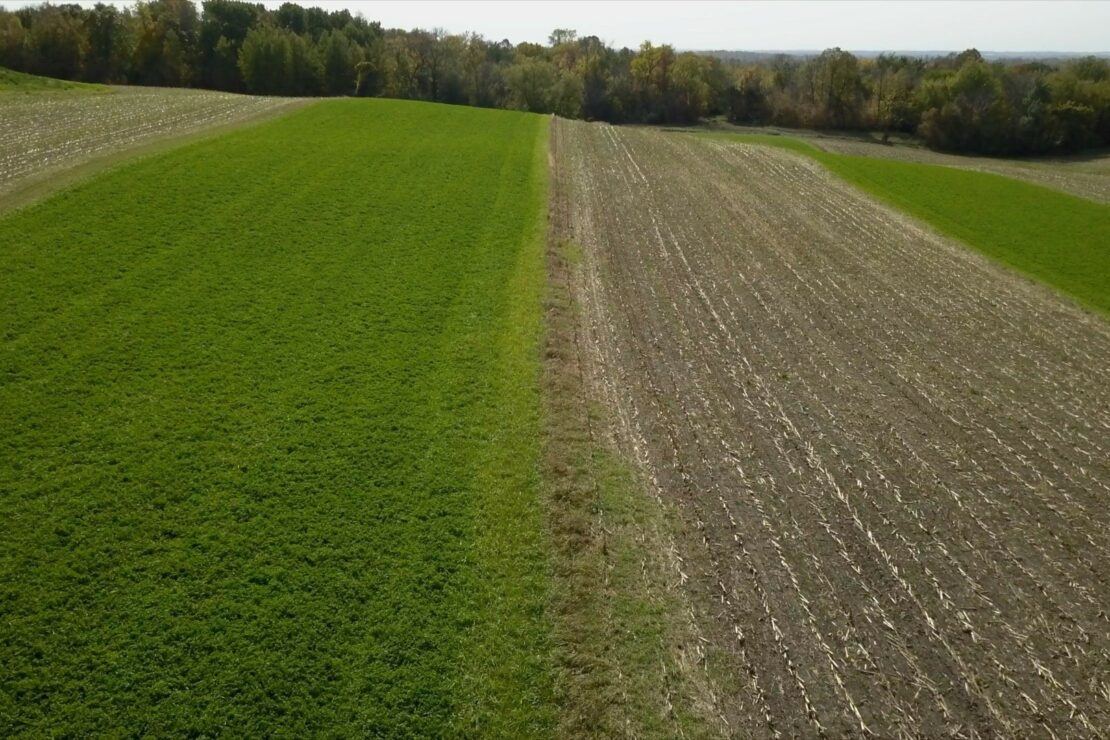
Farm Description
Tim Kerfeld runs a dairy farm with his family. He is the second generation on the farm and his son will be the third. They milk 250 cows and farm 400 acres, growing mostly corn as well as some soybeans, alfalfa, grass mix, and cover crops.
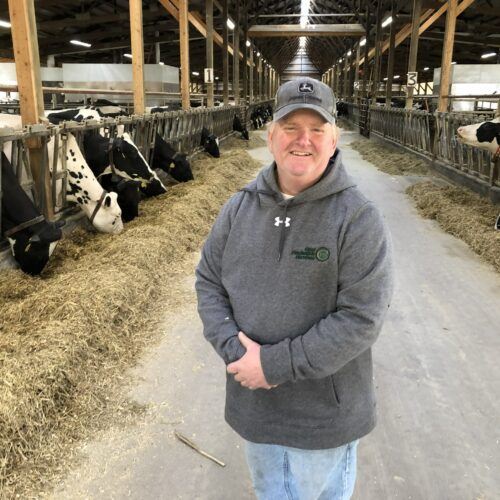
You want to keep the ground here… You want to leave the land in a better position than when you got it.
Overall, contour strip cropping, filter strips, grassed waterways, and water and sediment control basins decreased the amount of annual soil erosion by 1.8 tons per acre, and increased the soil carbon score by 0.23, indicating increased soil carbon.
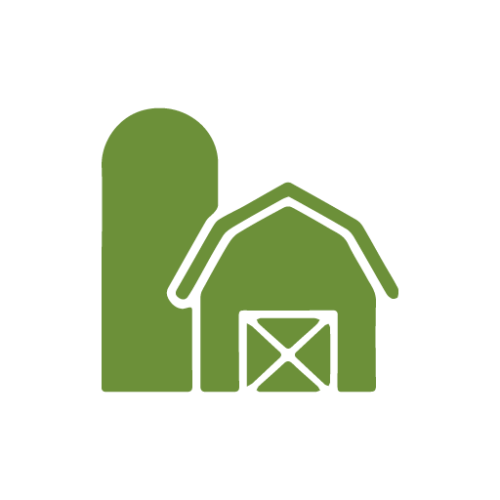
Minimum till to no till: reducing tillage has been a primary practice Kerfeld has used to reduce erosion.
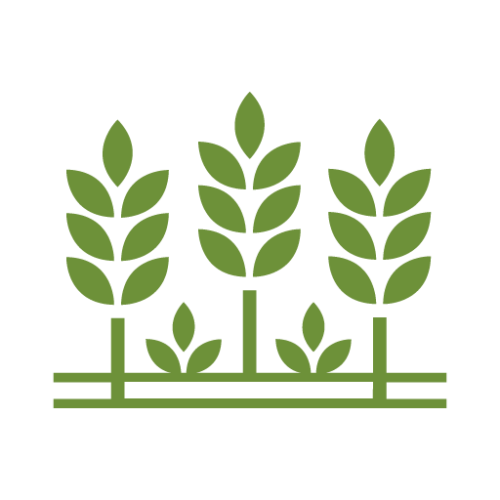
Cover crops: Kerfeld plants cover crops in the fall to capture the last of the nutrients and make forage for cattle.

Contour strips, filter strips, grassed waterways and sediment control basins: decreased the amount of annual soil erosion by 1.8 tons per acre while increasing the soil carbon score by 0.23 based on modeling assessments.
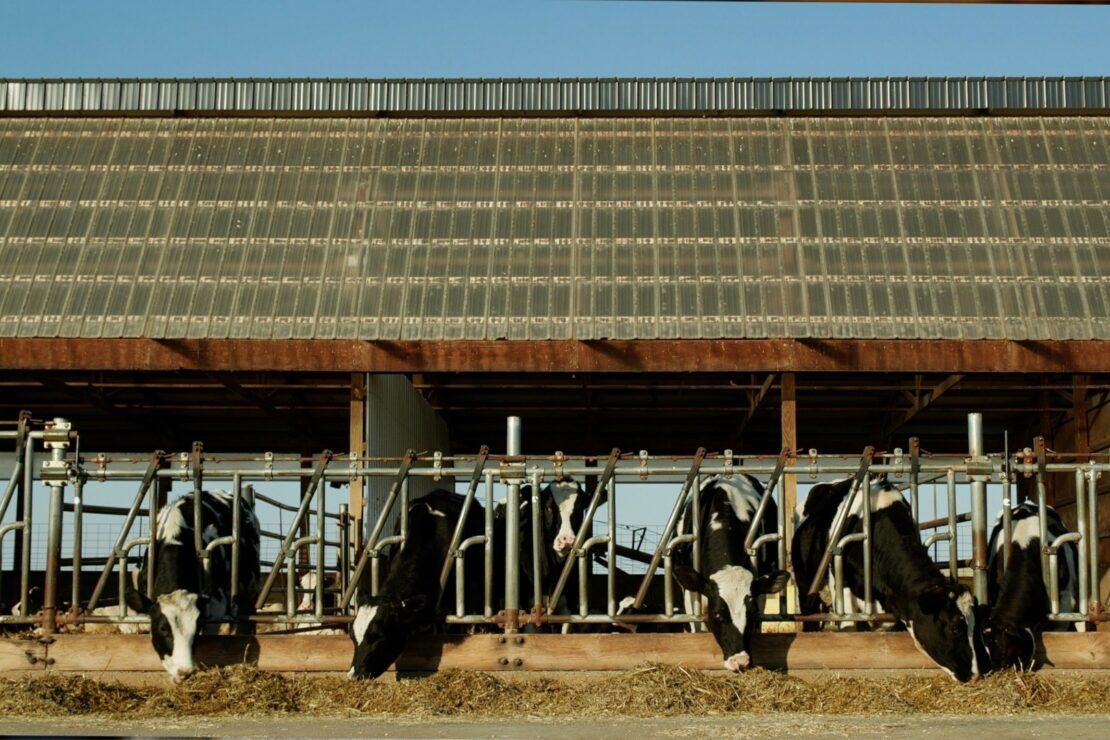
Moving into the Future
Kerfeld believed implementing conservation practices is part of how he keeps up with best practices and improves his land for the next generation.
“I believe conservation is going to continue. We can’t just keep tilling, flipping the earth upside down. We have to keep moving.”
Takeaways
- Technology and best practices are constantly changing, and farmers have to change with them to stay financially and environmentally sustainable.
- It takes digging into the numbers to see some of the financial and environmental benefits but the benefits of conservation but some impacts like less erosion you can see on the field.
What's New on the Farm?
Since 2020, Tim Kerfeld has expanded no till rather than conservation tillage at his farm and helped nine other farmers who are his customers make the transition. He also refined his cover crop usage — planting ryegrass, kale, and oats for the timing of their growing seasons. Noting that no till has been more difficult in drought years, Kerfeld is considering adjustments. He recently bought a larger machine to allow for vertical till and no till. Purchasing a no-till planter to help with the challenges of getting the crops in the ground is part of the farm business plan.
Agriculture News
Report: Conservation practices benefit the environment and local farmer’s bottom line
A recent return-on-investment study of dairy operations in central Minnesota found that profitability and environmental stewardship are complimentary. The study analyzed 10 farms and found that on average the farms demonstrated improved environmental and financial outcomes compared to benchmarks.
Connecting farmers with nutrients to improve environmental and economic outcomes
MINNEAPOLIS – Protecting Minnesota’s water quality and soil health are priorities for the organizations and farmers in the Headwaters Agricultural Sustainability Partnership (HASP), a group administered by Environmental Initiative. The partnership was recently recognized for its local…
Our role in Minnesota’s Climate Action Framework
The Walz Administration has released their Climate Action Framework, a vision for how Minnesota will address and prepare for climate change. Mike Harley shares examples of Environmental Initiative's commitments to collaborative action.
HASP Return-on-Investment case studies
Schefers Brothers Dairy: HASP Return on Investment
The Schefer brothers joined the return-on-investment program in part to learn how their practices measured up against traditional practices. Learn more about their conservation journey.
Jer-Lindy Farm: HASP Return on Investment
The Jennissen family shares a dream that Jer-Lindy farm can sustainably support Redhead Creamery production growth. Explore how they are working to achieve that vision.
Kuechle Dairy: HASP Return on Investment
The Kuechle siblings operate a third-generation dairy farm, plan to add cover crops into their rotation, and want to learn more about resources from partners and other farmers in the HASP return-on-investment program.
